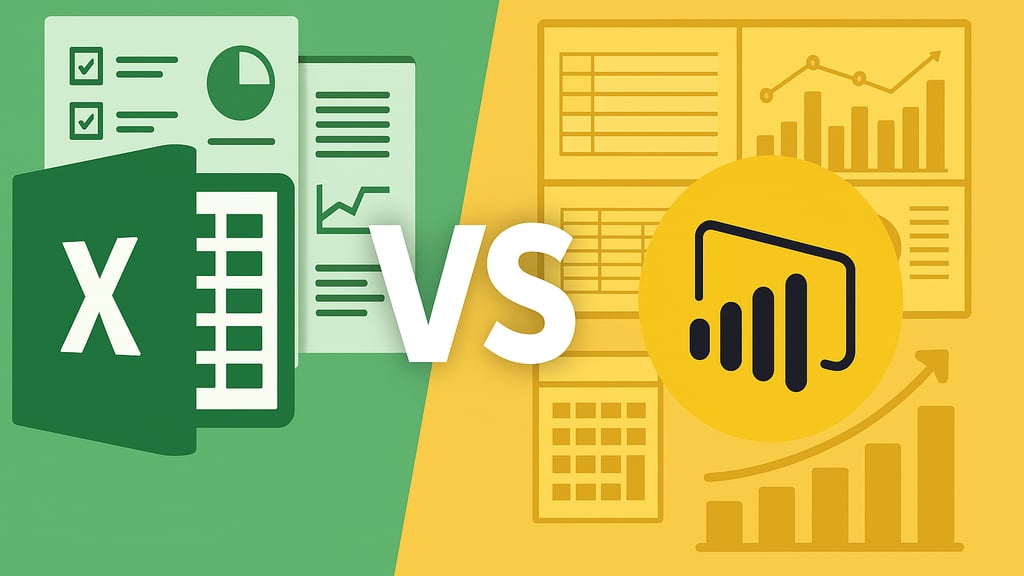Power BI vs. Excel: Why It’s Time to Move Beyond Spreadsheets
9/20/20252 min read


Excel has been the go-to tool for business reporting and analysis for decades. Its flexibility, wide adoption, and ease of use made it the cornerstone of finance, controlling, and many other business functions. However, as organizations grow and data volumes explode, the limitations of spreadsheets become increasingly clear.
Power BI, Microsoft’s modern business intelligence platform, is designed to overcome these challenges. It provides a scalable, automated, and collaborative environment for analytics. In this article, we explore the key differences between Excel and Power BI and explain why it is time for organizations to take the next step.
The Strengths and Weaknesses of Excel
Excel remains incredibly powerful for ad-hoc analysis, quick calculations, and flexible modeling. Controllers and analysts value it for:
Intuitive formulas and pivot tables
Flexibility to model data without IT involvement
Wide availability and familiarity across organizations
However, Excel has significant drawbacks when used as the main reporting tool:
Manual processes: Data imports and updates often require repetitive tasks.
Error-prone: Copy-paste mistakes and broken formulas are common.
Limited scalability: Large datasets can slow down or break spreadsheets.
Version chaos: Multiple files circulating by email lead to inconsistencies.
Lack of governance: Difficult to enforce data security and compliance.
Why Power BI Is the Next Step
Power BI addresses these challenges by providing a modern platform that supports the entire analytics lifecycle.
Automated Data Refresh
Instead of manual exports, Power BI connects directly to ERP, CRM, and other business systems. Data refreshes can be scheduled, ensuring that dashboards always display up-to-date numbers.
Interactive Visualizations
Where Excel relies on static tables and charts, Power BI provides interactive dashboards. Users can drill down, filter, and explore data in ways that Excel cannot match.
Scalability and Performance
Power BI’s tabular engine is optimized for handling millions of rows of data without performance issues. This enables analysis at scale without the frustrations of spreadsheet limits.
Governance and Security
With Power BI Service and Microsoft Fabric integration, organizations benefit from centralized governance, role-based access control, and compliance features. This ensures data is both accessible and secure.
Collaboration and Distribution
Reports and dashboards can be shared seamlessly across the organization. Stakeholders no longer rely on emailed files but can access a single version of the truth in the cloud or via mobile apps.
Excel and Power BI: Better Together
It’s important to note that Power BI does not replace Excel entirely. Instead, they complement each other. Excel remains ideal for quick analysis, financial modeling, or what-if scenarios. Power BI, on the other hand, excels at scalable reporting, dashboards, and enterprise analytics.
In fact, Power BI offers direct integration with Excel, allowing users to connect to Power BI datasets and continue working in their familiar environment while benefiting from governed data.
Conclusion
Excel has served businesses well, but the demands of modern data-driven organizations go beyond what spreadsheets can deliver. Power BI provides automation, scalability, governance, and interactive analytics that enable faster and more reliable decision-making.
For companies that want to move from manual reporting to true business intelligence, now is the time to move beyond spreadsheets. Power BI is not just the next tool—it is the next generation of analytics.
MB Data Expertise
Transforming data into actionable
business intelligence solutions.
© 2025. All rights reserved.

